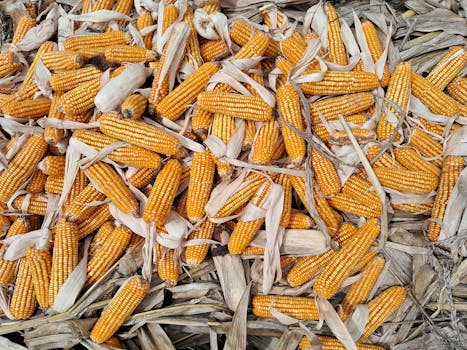
**
India's ambitious target to double maize production by 2047 without relying on genetically modified (GM) seeds has ignited a debate within the agricultural sector. Madhya Pradesh Chief Minister and Indian Agriculture Minister, Shivraj Singh Chouhan, recently announced a bold plan to achieve a staggering 86 million tonnes of maize production by the country's 100th Independence Day. This ambitious goal hinges on several key strategies, focusing on non-GM high-yielding varieties, improved farming practices, and strategic crop diversification. The plan also incorporates a significant push for increasing starch content in maize, a crucial element for various industries.
Doubling Maize Production: A Multi-pronged Strategy
Chouhan's vision for a maize revolution in India isn't merely a pipe dream. It's backed by a multi-pronged strategy aiming to address several critical aspects of maize cultivation:
High-Yielding Non-GM Maize Seeds: The Cornerstone
The core of the strategy revolves around promoting and widely distributing high-yielding non-GM maize seed varieties. This emphasizes a commitment to traditional farming methods and addresses concerns surrounding the potential environmental and health impacts associated with GM crops. The focus will be on developing and deploying varieties tailored to specific agro-climatic zones across India, maximizing yield potential in diverse conditions. This initiative requires significant investment in research and development, coupled with effective extension services to ensure farmers have access to the latest advancements in non-GM seed technology.
Enhancing Starch Content: A Key Economic Driver
The plan also underscores the importance of increasing the starch content in Indian maize. Higher starch content translates to greater profitability for farmers and enhances the value of maize for various industries. Maize starch is a crucial component in numerous products, including food processing, textiles, paper, and pharmaceuticals. Increasing starch content not only boosts farmers' income but also strengthens India's position in the global starch market. This necessitates research focusing on improving the genetic makeup of maize varieties to enhance starch yield.
Crop Diversification: A Path to Sustainable Agriculture
Recognizing the need for sustainable agriculture, the government is actively promoting crop diversification, particularly in states like Punjab and Haryana. These states, traditionally known for wheat and rice cultivation, are being encouraged to integrate maize into their cropping systems. Crop diversification offers several benefits:
- Reduced Pest and Disease Pressure: Rotating crops can help mitigate the buildup of pests and diseases, reducing the reliance on chemical pesticides.
- Improved Soil Health: Diverse cropping systems contribute to better soil health and nutrient cycling.
- Enhanced Food Security: Diversification provides a more resilient and stable food supply, reducing dependence on a limited number of crops.
- Increased Farmer Income: Diversifying crops can lead to increased income for farmers by offering multiple income streams.
Public-Private Partnerships: Driving Growth
To accelerate the growth of maize production, the Indian government has approved a public-private partnership (PPP) model to establish a dedicated maize cluster in Uttar Pradesh. This initiative aims to bring together the expertise and resources of both the public and private sectors to create a highly efficient and productive maize cultivation hub. The cluster will likely include:
- Modern Irrigation Infrastructure: Ensuring access to reliable water resources for optimal maize growth.
- Improved Storage and Transportation Facilities: Minimizing post-harvest losses and facilitating efficient market access.
- Access to Advanced Agricultural Technologies: Providing farmers with the tools and knowledge they need to maximize yields.
- Market Linkage Support: Ensuring farmers receive fair prices for their produce.
Challenges and Opportunities
While the goal of doubling maize production is ambitious, several challenges lie ahead. These include:
- Climate Change: The increasing frequency and intensity of extreme weather events pose a significant threat to maize production.
- Water Scarcity: Many maize-growing regions in India face water stress, necessitating the adoption of water-efficient irrigation techniques.
- Pest and Disease Management: Maintaining crop health requires effective pest and disease management strategies.
- Market Access and Price Volatility: Ensuring farmers have access to stable markets and fair prices for their produce is crucial.
Despite these challenges, the opportunities are immense. The success of this initiative could significantly enhance India's food security, boost farmer incomes, and strengthen the country's position in the global maize market. The focus on non-GM seeds also aligns with a growing global interest in sustainable and environmentally friendly agricultural practices.
Conclusion: A Maize Revolution in the Making?
Shivraj Singh Chouhan's vision for doubling maize production by 2047 presents a significant challenge but also a remarkable opportunity for India's agricultural sector. The strategy's emphasis on non-GM high-yielding varieties, increased starch content, crop diversification, and strategic PPPs offers a promising pathway towards achieving this ambitious goal. The success of this initiative will depend on coordinated efforts from government agencies, research institutions, private sector companies, and farmers themselves. The coming years will be crucial in determining whether India can truly achieve a maize revolution. The world will be watching.



















